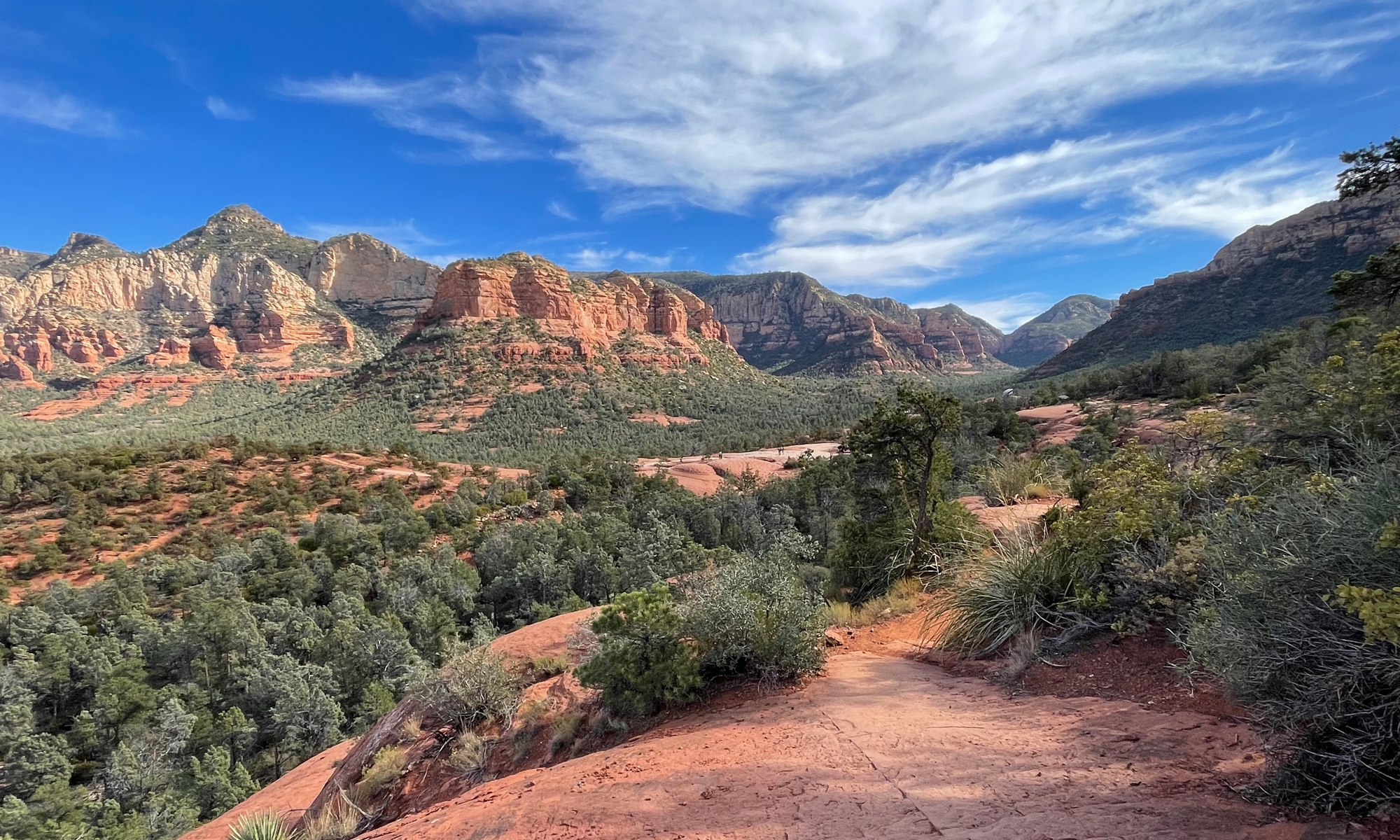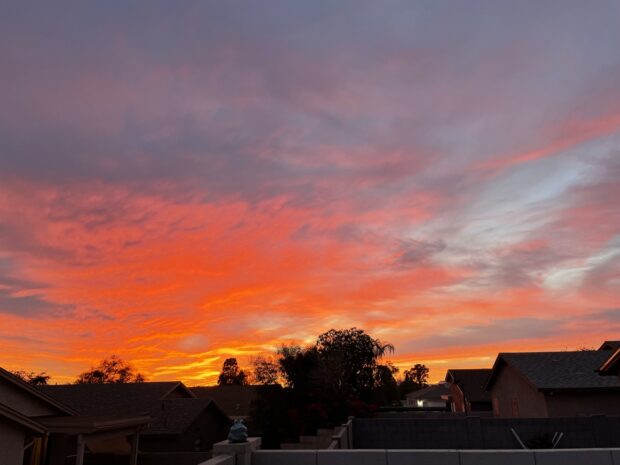I miss my catalog. I also miss writing. So now I am going to attempt to start blogging again.
Hubby came across the below image on Reddit recently. It’s an old aerial view of Tucson’s Rattlesnake Bridge, which is very close to downtown. In case you are wondering, we live far east of downtown, about a 12-mile (19.3 km) or 20-minute drive.
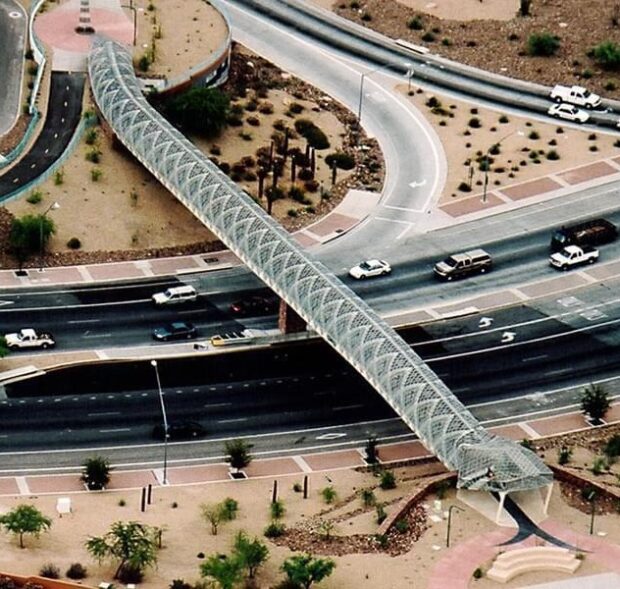
According to the Wikipedia entry…
Rattlesnake Bridge…is a 280-foot (85 m)-long footbridge over Broadway Boulevard between Iron Horse Park and Aviation Bikeway. Designed for the use of pedestrians and cyclists, the crossing is also called Diamondback Bridge or Snake Bridge and looks like one of the area’s endemic rattlesnakes.An artist named Simon Donovan designed the bridge, which cost $2.5 million to build in 2002. The snake’s eyes originally lit up at night, and the south end of the bridge has a huge rattle that makes a sound as travelers exit. The interior of the bridge is lit at night.
We have visited the bridge in person a couple of times. By that I mean we actually stopped, parked, and walked up to the bridge for a closer look. As opposed to driving by, which I do frequently.
Our most-recent visit to the bridge was in April 2023 when our friend Yves visited from Belgium. It’s always more fun doing this sort of thing when friends are in town.
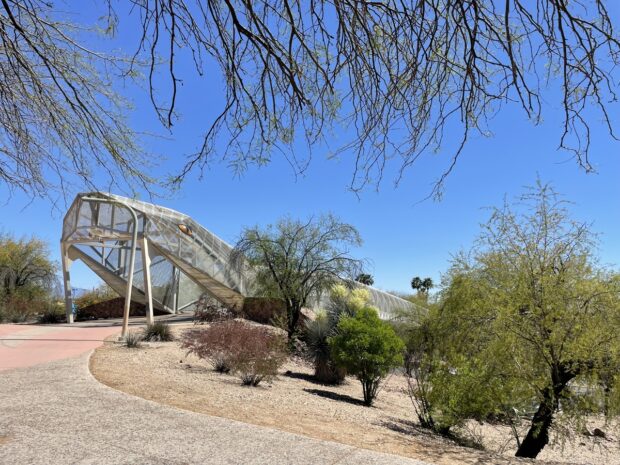
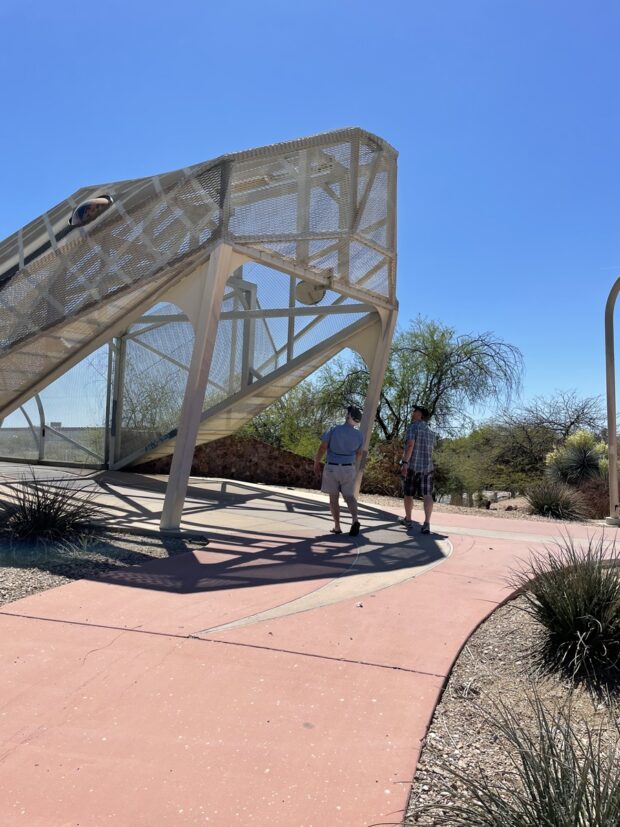
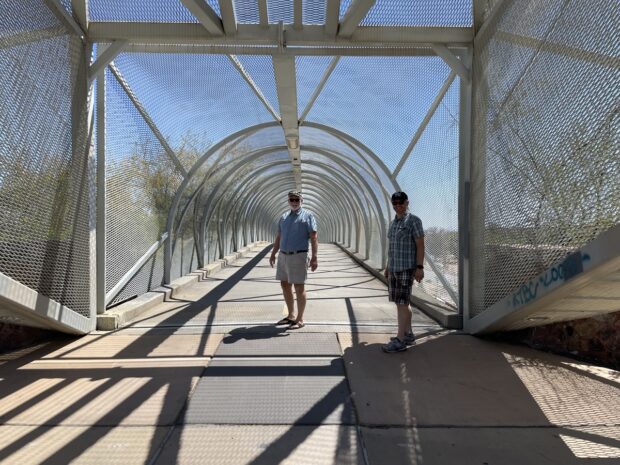
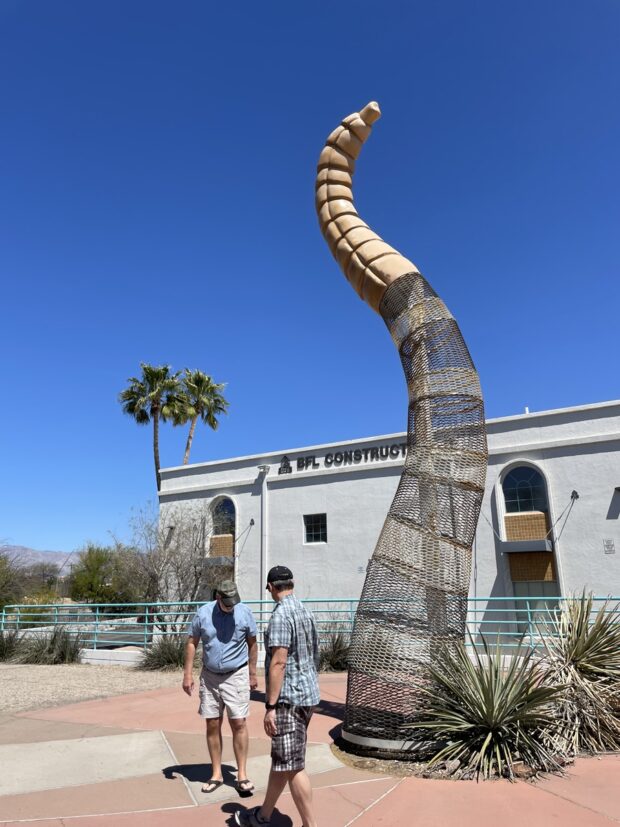
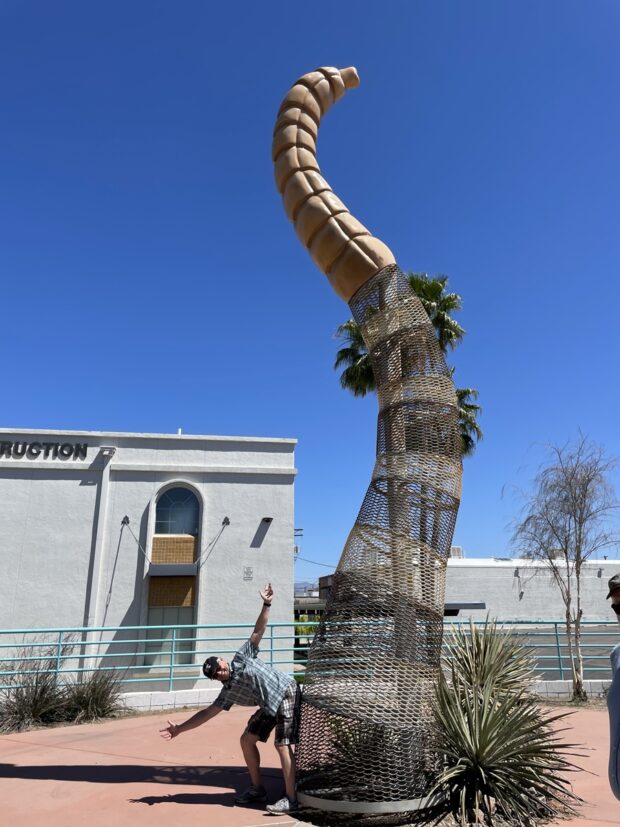
After that, we went to Sentinel Peak, aka “A” Mountain, for a view of Tuscon’s downtown.
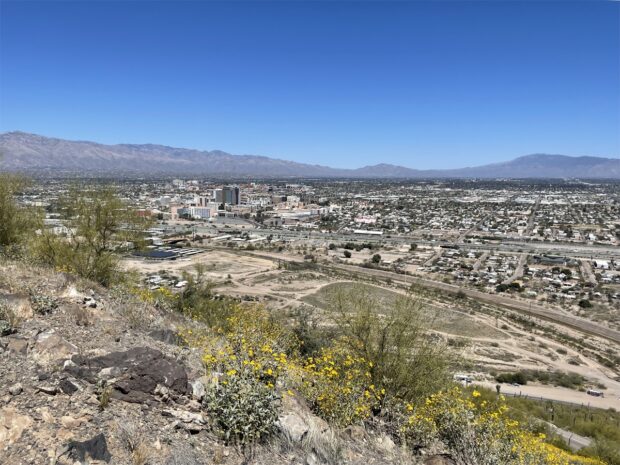
From A Mountain, you can see across Tucson from the southwest. The Catalina Mountains, background of image on the left, are north of the city and the Rincon Mountains, background of image on the far right, are east of the city.
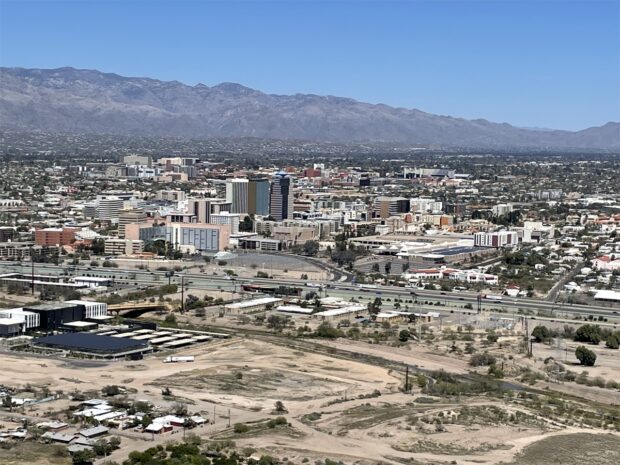
There’s lots more quirky and artsy stuff in and around Tucson. I look forward to sharing more in the near future.
I’m closing with this sunset capture I captured very quickly. I had gone outside to fire up the grill for dinner. how’s that for serendipitous timing?
The sunsets here can sometimes be quite breathtaking. I’ll probably share more here, so stay tuned…
